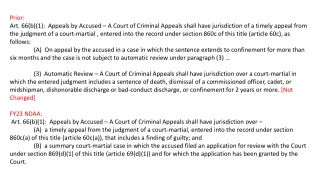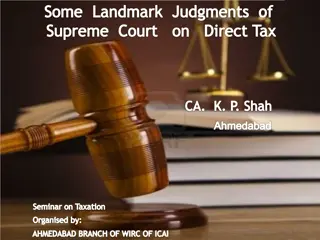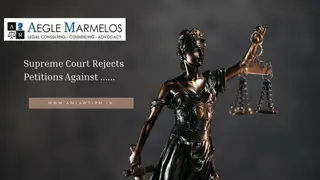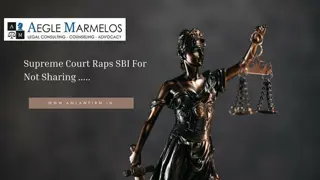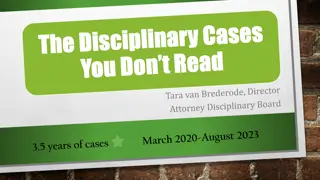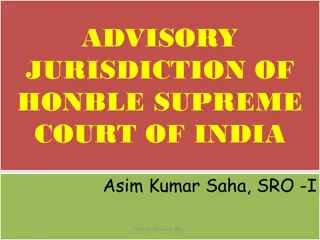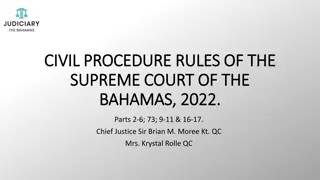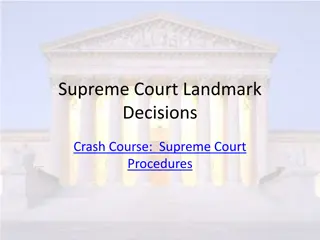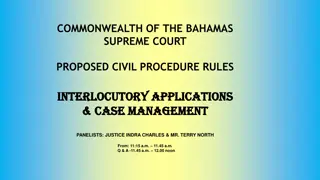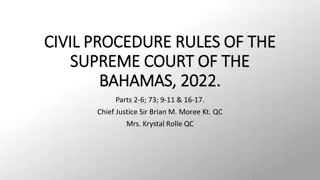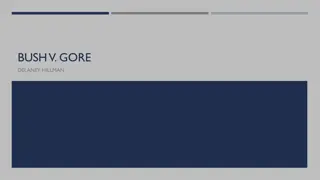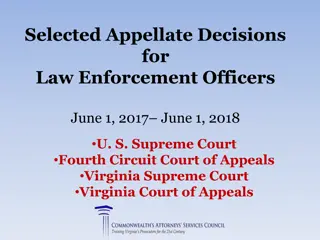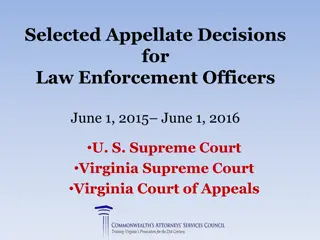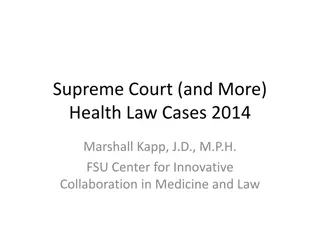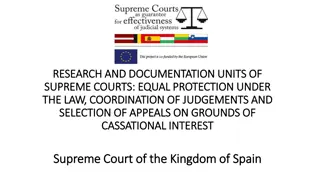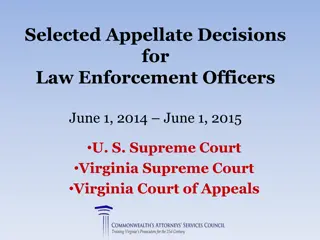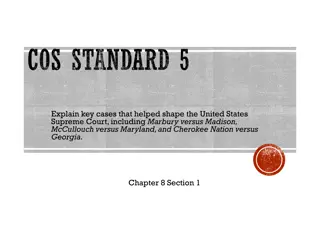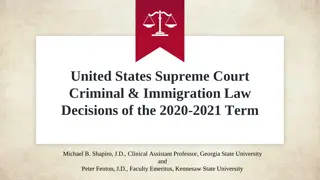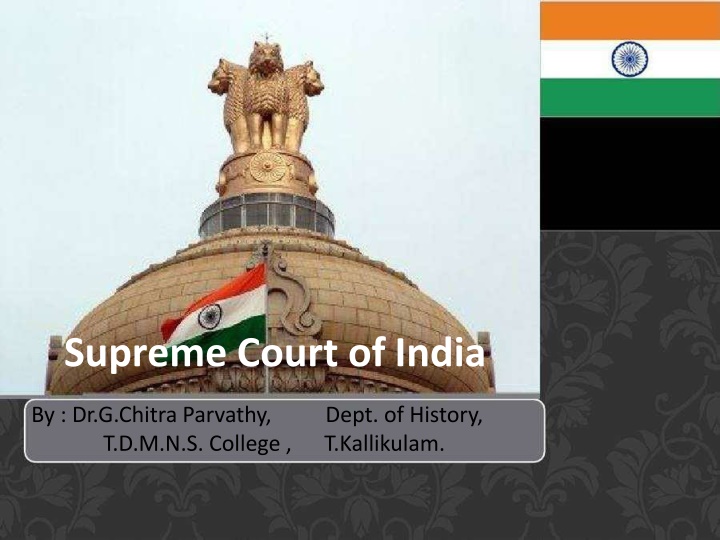
Supreme Court of India: Structure, Functions, and Independence
Learn about the Supreme Court of India, its structure, appointment process of judges, independence of judges, removal procedures, overview, powers, functions, and its role as the guardian of the constitution. Explore the highest judicial body in India and its significance in upholding justice and interpreting the constitution.
Download Presentation

Please find below an Image/Link to download the presentation.
The content on the website is provided AS IS for your information and personal use only. It may not be sold, licensed, or shared on other websites without obtaining consent from the author. If you encounter any issues during the download, it is possible that the publisher has removed the file from their server.
You are allowed to download the files provided on this website for personal or commercial use, subject to the condition that they are used lawfully. All files are the property of their respective owners.
The content on the website is provided AS IS for your information and personal use only. It may not be sold, licensed, or shared on other websites without obtaining consent from the author.
E N D
Presentation Transcript
Supreme Court of India By : Dr.G.Chitra Parvathy, Dept. of History, T.D.M.N.S. College , T.Kallikulam.
Structure Supreme Court HighCourt District Court SmallCivil Cases Criminal Magistrate CivilJudge
Appointment of Judges Appoint by the president of India. Citizen of India. High Court Judge for at least 5 years OR High Court Advocate for at least 10 years OR Distinguished Jurist Hold office till the age 65.
Independence of Judges Appointment of Judge after Consulting Judges Removal by Special Majority Discussion of the conduct of Judges prohibited in Parliament Power to punish for its Contempt
Removal of a Judge Grounds: Proved Misbehaviour or Incapacity Procedure: A Motion addressed to the President signed by 100 members of Loksabha or 50 members of Rajyasabha Investigation by Judges Inquiry Committee Motion carried in each House by majority of the total membership and by a majority of at least two thirds members present and voting President s order for removal of the Judge
Overview Supreme Court is the highest interpreter of the constitution of the country. Supreme Court of India came into existence on 26th January, 1950. Located at Tilak Marg, New Delhi.
Powers and Functions Guardian of the constitution OriginalJurisdiction Defender of the Federation Enforcement of fundamental rights Appellate Jurisdiction: Civil &Criminal Special Leave to Appeal Advisory Jurisdiction Review(Revisory Jurisdiction) Court of Records Contempt of Court Power of Judicial Review
Guardian of the constitution Supreme court enjoys the privilege of protecting the constitution against violation of its provisions either by government or by the people. It acts as the watch tower of the constitution and also exercise the power of interpreting the contents of the constitution.
OriginalJurisdiction Dispute between: Government of India and one or more States Between the Government of India and any State States on one side and one or more States on the other Between two or more States Subject matter ofDispute: Any question of Law or Fact on which existence or extent of legal right depends. Exceptions: Pre-Constitution Treaties, Agreements Inter-State Water disputes
Writ Jurisdiction HabeasCorpus Mandamus Prohibition Certiorari Quo Warranto
Appellate Jurisdiction: Civil & Criminal The appellate invoked by a certificate granted by the High Court concerned under Article 132(1), 133(1) or 134 of the Constitution in respect of any judgement, decree or final order of a High Court in both civil and criminal cases, involving substantial questions of law as to the interpretation of the Constitution. Appeals also lie to the Supreme Court in civil matters if the High Court concerned certifies : that the case involves a substantial question of law of general importance. that, in the opinion of the High Court, the said question needs to be decided by the Supreme Court. jurisdiction of the Supreme Court can be
Special Leave to Appeal Appeals from any judgment, decree, order, sentence, determination in any cause or matter passed or made by any Court or Tribunal Exception: Judgment of court of the Armed Forces When? In exceptional cases Illegality, Irregularity, Error of Law Miscarriage of Justice Principles of Natural Justice violated
Advisory Jurisdiction President may refer to Supreme Court for opinion Question of Law or Fact: Which has arisen or likely to arise And of great public importance Court may after Hearing report to the President Judges to hear: Minimum 5
Review To review any judgment pronounced or order made Subject to Law passed by Parliament When? Discovery of new important matters of evidence Mistake or error on the face of the record Any other sufficient reason Review is exceptional phenomenon Only where a grave and glaring error
Court of Record A court of record is a court where records are admitted with evidentary value and they are not to be questioned when they are produced before the court. Power to punish for Contempt of itself

